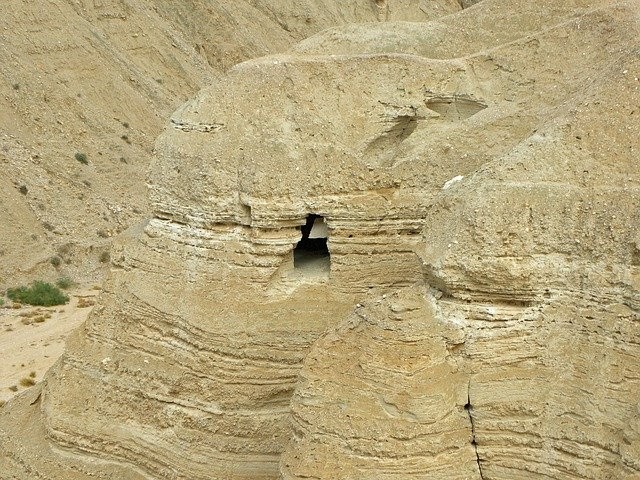
An innovative DNA fingerprinting technique using ancient sheep and cattle DNA provided new insights on the Dead Sea Scrolls and the Essene's social fabric. The Essenes are an ancient Jewish sect of ascetics from whom the Dead Sea Scrolls are attributed.
The study has been published in the journal Cell by Tel Aviv University George S. Wise Faculty of Life Sciences professor Oded Rehcavi, Tel Aviv University Department of Biblical Studies professor Noam Mizrahi, and colleagues.
Rehcavi and Mizrahi have developed the new DNA sequencing technique, which will let them match and distinguish the minuscule fragments that compose the scrolls. It helps in placing the pieces in their correct and proper context, as shared by the University of Birmingham Hebrew Bible & Second Temple Judaism professor Charlotte Hempel. According to Bar-Ilan University science historian Oren Harman, things that were not previously seen with the use of traditional literary, archaeological, and historical references have been brought to light by the new technique.
Most of the material comprising the Dead Sea Scrolls has disintegrated into many fragile pieces numbering roughly 25,000. Very few of the scrolls were intact upon their discovery. For decades, researchers have tried to build the pieces back together, as the fragment heap grows ever larger. It was first stored in the Rockefeller Archaeological Museum at eastern Jerusalem. Mizrahi said that matching the pieces together is a serious challenge.
The researchers focused on 40-50 artifacts, including fragments with ambiguous origins. Research team member Sarit Anaya extracted the DNA of 26 fragments at the clean rooms of the laboratory of Mattias Jakobsson in Sweden's Uppsala University. Sequencing was also done on leather sandals, leather water skins, and a leather garment coming from Qumran.
The DNA sequences were first used to determine what animal was used for creating the parchment, whether it is from a cow, sheep, goats, or ibex. Almost all of the parchments came from the skin of sheep, with a few of them being made of cowhide.
This provided the insight that cow skin scrolls probably came from another area or region, because it is virtually impossible to farm cattle in the desert which surrounds Qumran, due to their need for large amounts of drinking water and grass.
The Book of Jeremiah had three fragments subjected to genetic analysis. One turned out to be made of cow skin while the rest were of sheepskin. The cowhide scrolls were a different version of the said book, which means that the Essenes, as well as the Jewish society of that time, were not "orthodox" because they welcomed different versions of a divinely inspired book. This is unlike what the majority of Jewish communities practice today, with their use of just a single identical Hebrew Bible worldwide.
KU Leuven ancient Judaism and Dead Sea Scrolls specialist Eibert Tigchelaar says that the new technique can help in more than just the cultural aspect. It can help in a substantial way towards reconstructing the scrolls. A database can be created from the DNA of a large section of the material, which can help identify thousands of unidentified fragments. The new interdisciplinary approach brought forth new tools for studying ancient artifacts.
© 2025 NatureWorldNews.com All rights reserved. Do not reproduce without permission.





